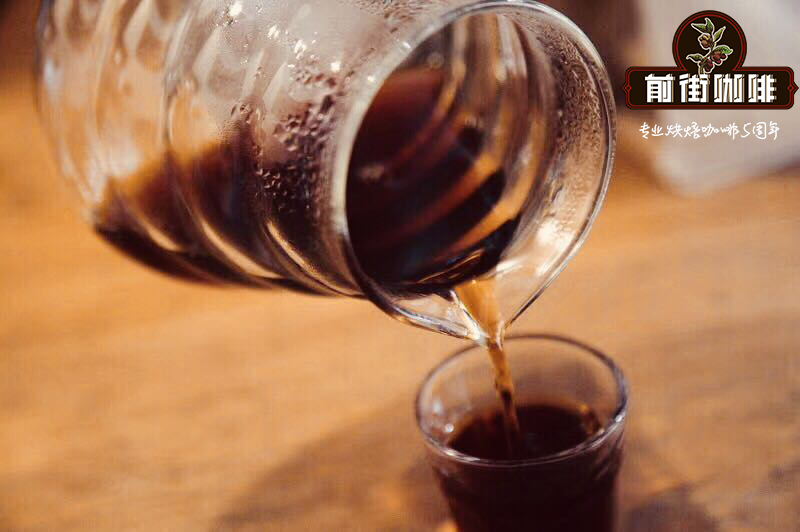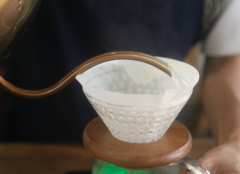Which coffee beans are suitable for anaerobic fermentation? Introduction to the process of anaerobic fermentation treatment

Professional coffee knowledge exchange more coffee bean information please follow the coffee workshop (Wechat official account cafe_style)
When fermentation is carried out in an environment with low oxygen concentration, the rate of pectin decomposition can be reduced by anaerobic fermentation. So as to avoid producing the acidity of alcohol.
With the increasing prosperity of the global boutique coffee market, more and more attention is being paid to quality from the production end to the consumer side. From planting, to post-production, to extraction... Every link is in the stage of "development". Every once in a while, there are always new techniques, new concepts and new models used in the coffee industry.
In terms of post-processing methods, in addition to the traditional washing methods, solarization methods, Indonesia's unique wet peeling methods, and honey treatment led by Costa Rica, several new or experimental treatments are also developing rapidly in recent years. Among them, the 'anaerobic fermentation treatment method Anaerobic Fermentation', which imitates red wine brewing, has attracted special attention. We won the 2015WBC title from Sasa Sestic from Australia in 2015 with a coffee bean that simulates "red wine treatment". Five of the top six contestants in the 2018 WBC Competition (except the Dutch contestants) unanimously chose the coffee beans of 'anaerobic fermentation treatment Anaerobic Fermentation'' to participate in the competition, and it is not difficult to see its strong posture.
What is Anaerobic Fermentation'? by anaerobic fermentation treatment?
According to Sasa Sestic himself, the method is to inject carbon dioxide into an airtight container, squeeze out the oxygen, slow down the decomposition rate of sugar in coffee pectin in an oxygen-free environment, decrease the ph value more slowly, and prolong the fermentation time, thus developing a better sweetness and a more balanced flavor.
As this method is still in the "development" stage, there is no absolutely authoritative or complete standard version.
100% ripe fruit is manually harvested to the treatment plant to carry out 'anaerobic fermentation'. The average fermentation time of the whole fruit is 24-48 hours and then sent to the greenhouse for 4 days to remove the pectin layer, and then placed in the African scaffolding bed for 18-20 days. carry on the final drying operation, and finally put the coffee in a bucket and seal it.
The four main elements of this approach are:
1. Shade system
The shade system can effectively block out the sun, so that the pulp can produce more sugar, thus making the final coffee more sweet and wonderful and shiny sour.
2. Stainless steel container
Coffee beans are fermented in stainless steel containers as soon as they are picked, instead of using traditional cement or ceramic tile containers, which absorb the flavor of coffee beans rather than retain more of the flavor in the pulp of coffee. The flavor of coffee can be made cleaner by using stainless steel containers.
3. Carbon dioxide
The container in which the coffee beans are placed is then sealed and pressurized with carbon dioxide so that there is no oxygen in the container. This ensures that the flavor and aroma of all the coffee are retained in the coffee, and the flavor of the coffee is more obvious.
4. Controllable temperature
Finally, these containers of coffee beans are placed in a controlled environment to control more of the factors that replicate the same flavor of coffee beans. However, the traditional treatment methods are affected by weather, humidity and other factors, so it is difficult to ensure that the flavor of beans treated each time is consistent.
(Anaerobic/Carbonic Maceration) anaerobic fermentation treatment is mostly translated into carbon dioxide impregnation, anaerobic fermentation or red wine treatment, and in the case of literal translation in producing areas, it is also translated as pressure honey treatment. Like brewing wine, the removed coffee pulp and pectin coffee beans are fermented in a bucket, and the pressure in the bucket slows down the fermentation rate, so the taste of those cinnamon biscuits is also the product of anaerobic fermentation.
Important Notice :
前街咖啡 FrontStreet Coffee has moved to new addredd:
FrontStreet Coffee Address: 315,Donghua East Road,GuangZhou
Tel:020 38364473
- Prev

[Qianjie barista's Note] is it better to extract strawberry filter cups by stages or with a knife?
We discussed the day before yesterday that [strawberry filter cup] extracted a shallow roasted coffee bean under different grinding pairs. It was found that the extraction rate of V60 was higher, and the flavor was more complete and hierarchical. If you like the rich fruit flavor, you can thicken it a little bit. For details, you can see: "what grindness is needed for strawberry filter cup to boil light baked beans?"
- Next

Which coffee beans are suitable for anaerobic fermentation? Introduction to the process of anaerobic fermentation treatment
Professional coffee knowledge exchange more coffee bean information please follow the coffee workshop (Wechat official account cafe_style)
Related
- What is the meaning of lactic acid fermentation with coffee bean treatment?
- How to judge the state of foam by sound?
- How does the latte pull out the unicorn pattern? Come to get for a little trick to improve the flower pull!
- Will flower pulling affect the taste of the latte?
- Do you know the history of coffee?
- The difference between honey treatment and sun washing what is raisin honey treatment?
- What kind of milk can a novice use to make coffee foam to keep the foam longer? The correct method and skills of milking tutorial sharing
- Why do washed coffee beans taste sour? Flavor characteristics of washed Coffee
- Introduction to the skill of how to practice the size and height of water injection around the circle of hand-brewed coffee
- How do beginners practice coffee flower drawing from scratch?

